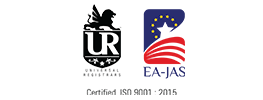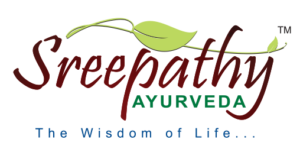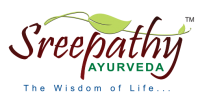| SUBJECTS Part A | | 1 | MoolaSiddhanta of Ayurveda (Basic principles of Ayurveda) | 100 Marks | | 2 | Anatomy & Physiology + Marma | 100 Marks | | 3 | Swasthavritta | 100 Marks | | 4 | VikrithiVinjana | 100 Marks | | 5 | Basics of dravya-Guna& Basics of BhaisajyaKalpana | 100 Marks | | SUBJECTS Part B | | 1 | Panchakarma part 1 | 100 Marks | | 2 | Panchakarma part 2 | 100 Marks | | 3 | Ashtanga Ayurveda | 100 Marks | | 4 | Nursing Administration and communicative English | 100 Marks |
SUBJECT PART – A
| | 1. MOOLA SIDDHANTA OF AYURVEDA: | | DEFINITION: – Ayurveda, Four Goals of life, Origin of Ayurveda, The eight branches of Ayurveda, Pancha – Bhutatattva, Tridishas – Vata, Pitta and Kapha _ Qualities, Actions, Formation, Sthana (location) in the body, Based on day and night, And Age. | | SAPTA DHATUS – The Sptadhatus, Rasa, Rakta, Mamsa, Medas, Asti,Majja, Sukra and Sronita – Their formation’ Functions. | | TRI MALAS – Purisha, Mutra, Seda – Formation and Functions. | | AGNIS – Saptadhatnagni, Panchabhutagni, Jataragni. | | GUNAS – Mahagunas, Gurvdigunas, Shdrasa, Their effects on tridoshas, Virya, Vipaka and Prabhava, desa, baaisaja kala, classification of diseases based on body and mind, Pada – Chatustayam – Bhisak, Dravya, Upastha, and Rogi, Vegas (urges) – 13 types of Vegas – Dharaniya and Adharaniya Vegas, Classification of diseases according to prognosis, Nija and Agantojarogas, Classification of diseases – Seven types – Sahaja, Garbhaja, Jataja, Pidaja, Kalaja, Prabhavaja and Swabhavaja, Causes of diseases – Asatmendriyartasamyoga, Pragnaparada And parinamarogamarga – Bahya, Madhyama&Abhyantara, ama and Nirama, Signs & Symptoms of Ama, Classification of diseases based on Tridosas – 80 types of Vatajaroga, 40 types of pittajaroga, 20 types of Kaphajaroga, Ojys, Bhaishajya – Samshodhana&Samsamana, Bhaishajya kala. |
2. ANATOMY & PHYSIOLOGY: | A basic knowledge on various systems of the human body – Their anatomy and physiology. Knowledge on Ayurvedicvarma points. | | 3. SWASTHA VRITTA: | | Padachattustayam, The Gunas of Bhishak, Dravya, Paricharaka, and Rogi, Dina chrya Brahma muhurtha, Passing of urges, Danta – Dhavanam, Anjanakarma, Nasya, Kavala, Gandusha,Dhumapana, Tamboolasevana, Abhyanga, Vyayama, Udvartana, Snana,Bhojana, Ratricharya, Ritucharya – Shadritu and ritucharya, Anna swarupa – Aknowledge of Kritanna – Manda, Peya, Vilepi, Odana, Three Upasthamsa – Ahara, Nidra, Brhamacharya, Janapadodwamsa (Epidemics), Saptaharakalpana – Swabhava, Samyoga, Samswkara, Matra Desha Kala, satmya, Bhojanavidhi, Anupana, Pathya – Apathya, Infections, Infestationa, Infectious diseases and Epidemics / pandemics, Hospital building and location knowledge on social hygiene – Air, Land water light < waste products toilets Industries schools occupational hazards Primary health care Family welfare programmes National progerames Mother and child welfare programme, WHO, Health administration, Health related statistics. |
4. BASICS OF ROGA NIDANA AND ROGA VINISCHYA: | | (A) Introduction – to rogavignana, Tridoshas, Saptadhatus, and trimalas, – their role in the causation of diseases, Signs & symptoms of Increase and decrease of doshas, Dhatus and Malas, The Kriyakalas, srotas – Importance of srotas in the production of diseases, Types of srtas, Types of diseaseas. | | 1 | Agantuja, sarira, ManasaSwabhavika. | | 2 | On the basis of Adibalapravritta, Etc. | | 3 | On basis of prakruta – Vaikruta. | | 4 | On the basis ofAnubhandya – Anubhandha. | | 5 | Numerable and innumerable nature of diseases. | | 6 | Classification of diseases and it’s consensus with classification according to WHO. |
Immunity and Hypersensitivity – diseases and their types, Ashtanindita, Eight mahagada, Santarpanottah, apatarpanottah, Ojovyapada, Ojpvidramsa, benign tumors and malignancy. Ama and pakva avasthas, /sama – Nirama of doshas, Sama – Niama of dhatussama – nirama of malas, Uttana and Ghambira diseases, Dhatugatatva, Antarvegi – Bahirvegi, Jana – Padodwamsa, Importance of nidanapanchaka, Methodology for investigation of diseases (Clinical methods), The Hetus – Asatmy – Endriyarthasamyoga, Pragnaparada and parinamaprognsis – Chaya, Prakopa, Sthanasamsraya, Purva – Rupa, Rupa, VyaktiBhedasamprapti, Rogi – Pareekhavidhi – Trividhapareeksha, Ashtavidhapareesha |
(B) A knowledge on the Cause, Signs & Symptoms and prognosis of various diseases mentioned in classical Ayurvedic texts Viz, Jwara, Rakta – Pitta, Kasa, Swasa, Hidma, Rajayakshma, Pramcha, Arsas, Grahani Shola, Vriddhi – Vidradhi, GraqnthiArbuda, SophaKushtoGulmaAtisaraVara – Vyadhi, Vatarakthaapasmara – Unmada, Etc. |
5. BASICS OF DRAVYA GUNA:- | | Introduction to Dravyaguna, Definitions – PadarthaSaptapadarta according to Ayurveda. Definition – Dravya its classifications, Gunas – Mahagunas& 40types of gunasvyavayi &Vikashi, Karma Rasa – Shadrasas, Their effects of tridoshasGuna – Karma of shadrasas, Viryavipala and prabhavaAbasic knowledge on the various herbs used in Ayurveda – Identification and study of the regularly used herba like – TriphalaTrikatuYastimathu, Rasna, BalachaturjataThaleesaDasamula, etc. |
BASICS OF BHAISAJYA KALPANA: | | Introduction to Bhaisajyakalpana ,Classification of aushadi – Shodhana&Shamana, Bhaisajya kala – Kshanadi&Vyadhyavastha, Desha – Classification, Clinical observations before administration of medicines Bhaishajya kala – Classification of bhaishajya kala Pathya – Apathyaanupana benefits of Anupana, Various types of Ayurvedic formulations used in the treatment of diseases – Kwatha, Arista – Avaleha, Ghrita, Churna, Gutika, thaila, Etc. |
SUBJECT PART -B |
|
| 5. PANCHA KARMA- I | | GENERAL INTRODUCTION TO CHIKITSA- a) Samsodhana. b) Samsamana | SIX TYPES OF CLASSICAL THERAPY (SHADUPAKRAMAS)-
1. Langhana, 2. Brimhana, 3.Rokshana, 4. Snehana, 5. Swedana, 6. Stambana | | AbhyangaChikitsa and its classification on various criteria. | THE CLASSICAL AYURVEDIYA PANCHAKARMA – THE STAGES OF PANCHAKARMA TREATMENT –
A) PURVA KARMA, B) PRADHANA KARMA AND C)PASCHAT KARMA. | | Classification of Panchakarma according to kaya chikitsa and shalya. | | SCOPE OF PANCHA KARMA | | PURVA KARMA: | | Snehana karma – Properties, basic sources of snehadravyas, indications of snehana, contra – indications of snehana, procedures of snehana, anupana in sncana, observations of the patient – a) features of samyaksnehanaq (adequate), b) features of asamyaksnehana (in adequate), c) features of atisnighana (excessive) d) snehavyapada, post snehana regimen. | | SWEDANA KARMA: | | Classification – sagni&Anagni, Indications, contra- indications, procedure of swedana, observations of the patient- a) Samyaksweda, b) Asamyaksweda, c) Atisweda, post swedana regimen, mode of action of sweda. | | PRADHANA KARMA: | | Classification according to kaya chikitsa&shalya. | | VAMANA KARMA: | | Introduction, pharmacodynamic properties of vamakadravyas, indications, contra- indications, procedure of vamana, pathya – apathya, samyakvamana, asamyakvamana, ativamanasamsarjana karma. | | VIRECHANA KARMA: | | Introduction, Virechana drugs, indications of virch, Ana, contra- indications procedure of virechana, general precautions, samyakvirechana, asamyakvirechana, ati- virechana, virechanavyapada. |
6. PANCHA KARMA- II | | VASTI KARMA: | | Introduction Classification, Indications for Asthapana, Contra-indications for Asthapana, Indications for Anuvasana, Contra- indications for Anuvasana, Procedure of Vasti, Post Vasti, Regimen, VastiVyapada. | | SIRO- VIRECHANH KARMA (OR) NASYA KARMA: | | Introduction, Classification, Navananasya, Avapidanasya, Pradhamananasya, Dhumanasya, Marsa- Pratimarsanasya, Nasya drugs, And their procedcodynamics, Indications, Contraindications, Procedure of nasya, Post nasya regimen, Samyaknasya, Asmyaknasya, Atinasya, Nasyavyapad. | | RAKTHAMOKSHANA: | | Introduction Classification, Features of normal rakta, Functions of rakta, Indications of raktamokshana, Contra- mokshana, Jalaukaavacharana, Sira- Vyadha.Indications contra – indications, Samyak, Sira- Vyadha, Asamyaksira- Vyadha, Atisira- Vyadha, Raktastambana, Post – Raktamikshana regimen, Prachana, Alabu, Ghati- Yantra. The vahihparimarjana therapies of Ayurveda – an introduction. | | KERALIYA PANCHA KARMA: | | Keraliyapanchakarma- Its five components, Dhara Kaya seka, Pinda- Sweda, Anna lepa, Siro lepa – Introduction, Comparison of classical Ayurveda panchakarma&KeraliyaPanchakarma. | | DHARA: | | Introduction Classifications, dhroni – VidhanamSarawavidhara, Stri- StanyaYuktakshradhara, Thailadhara, Kwatha (Ausadhi0 dhara, Siro- Dhara procedure. | | KAYASEKA: | | Introduction, The Procedure. Complications. | | PINDA SWEDA (OR) NAVARAKIZHI: | | Procedure, Preparation of pottali and payasam, Ela kizhi, Podi – kizhi-procedure. | | ANNALEPA: | | Introduction, Preparation of Anna lepa, Method of treatment. | | SIROLEPA: | | Introduction, Preparation, Method | | SIRO VASTI: | | Introduction, Preparation, Method | | UDVARTANA: | | Introduction, Preparation, Method. |
7.ASHTANGA AYURVEDA- Eight branches of Ayurveda, Kaya chikitsa, Balachikitsa, GruhaChikitsa, salakyatantra, Salyatantram, vishachikitsa, jarachikitsa , rasayan and vajeekaran |
8. NURSIING ADMINISTRATION and COMMUNICATIVE ENGLISH
A knowledge on the administrative procedures of Nursing based on morden concepts.Chikitsachathushpad COMMUNICATIVE ENGLISH - Language as Communication
- Parts of speech
- Essential Components of language : Listening, Speaking , Reading, Writing
- Language Structure –Subject and Predicate
- Situational English
|
|






